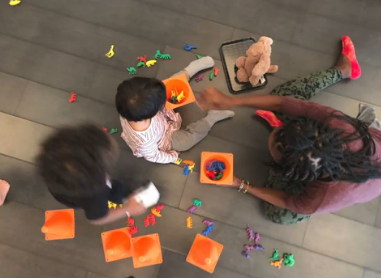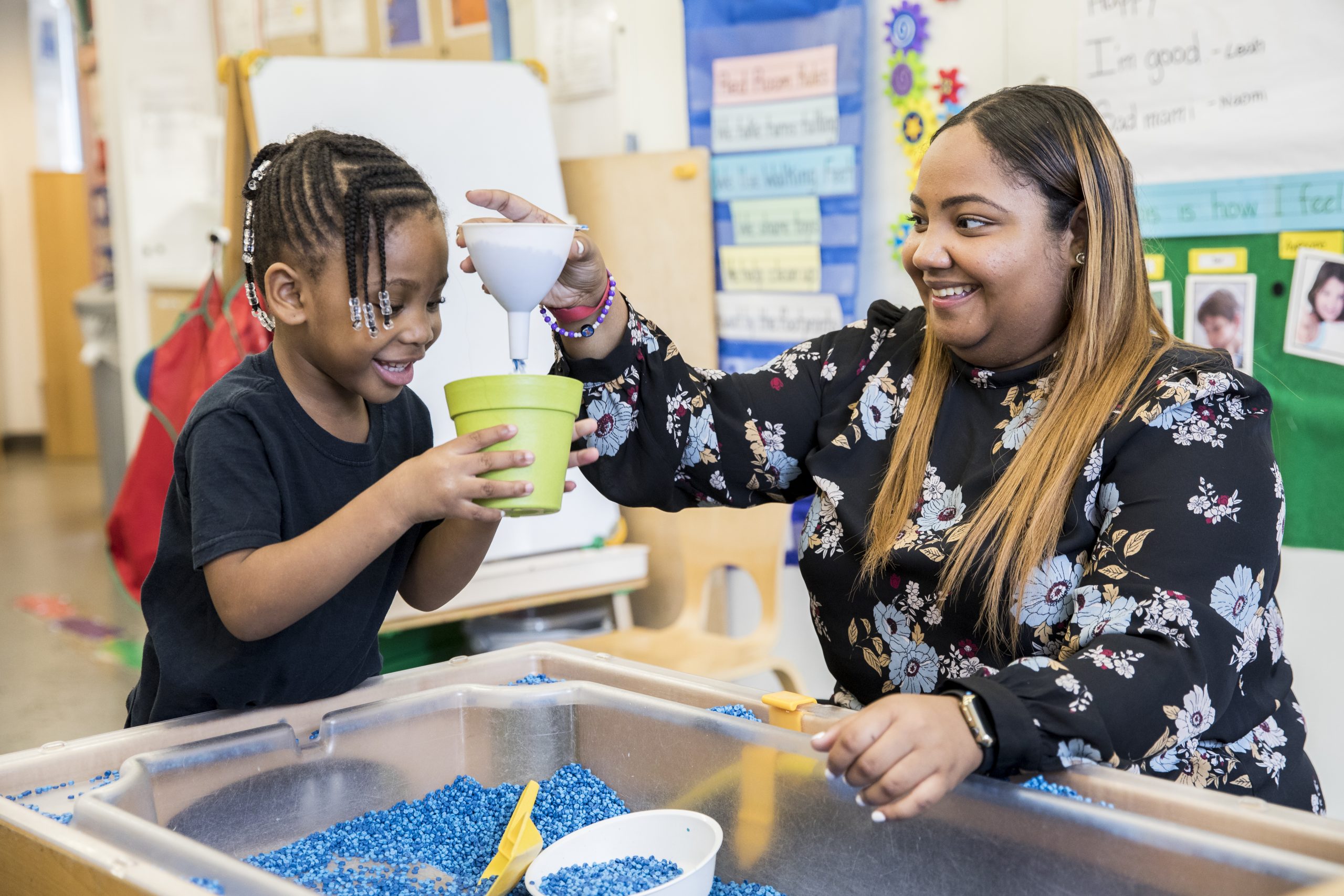I cannot begin to say how proud I am of my staff and colleagues. People react very differently to stress/trauma, and we collectively reacted in a very proactive way to the needs of our center’s families. We closed our doors on Friday, March 13, and by Monday, March 23rd, we began providing daily pre-recorded circle times, daily themed video collections (gross motor, early literacy, fine motor, science discovery, math and manipulatives, nature studies and music and movement), personal calls to the children and their parents, Zoom class meetings (2/3 times per week), and evening bedtime stories. Parents were also offered weekly themed outreach sessions (Talking w/your Children about Covid-19; Importance of Self Care; Potty Training During Covid, How to Handle Family Stress During Covid). On April 27th, we began also creating videos for pure entertainment purposes – realizing that both the children and their families needed de-stressors. It’s been an amazingly stressful yet gratifying time! – Workforce Survey Participant
The New York Early Childhood Professional Development Institute, in partnership with the Bank Street College of Education, recently completed a survey to understand the impact of the COVID-19 pandemic on New York’s early childhood workforce. The survey included early childhood program leaders, teachers, and family child care providers. Over 3,000 individuals who are members of the state’s Aspire Registry responded. The survey sought to provide a descriptive snapshot of the workforce during the pandemic in order to stimulate dialogue to help the field navigate this crisis.
The successes and challenges of trying to collaborate during the pandemic were evident from the survey responses. The shift to a virtual format impacted the work of many early childhood professionals who provide services to young children including co-teachers, social workers, assistants, therapists, and SEITS (Special Education Itinerant Teachers). These partnerships are crucial for ensuring children receive all the services they need. This is especially true for children with special needs (Friend, 2007).
Strong relationships in the early childhood field are important in creating a warm, welcoming classroom for all children and adults. Even prior to the COVID-19 pandemic, achieving these successful teams involved strategies to maintain open communication during the busy schedule of the classroom. Establishing routines within a sincere, open framework helps to maintain this collaboration. Transferring such practices to a virtual format has been a challenge. While many of us in the early childhood workforce are finding strength in collaborating with each other, the pandemic has also strained the teaming relationships that are so important. In some cases, this time has put a hold on previously well established strong partnerships. As one survey respondent commented, “My coworker was chosen to lead online learning while I was furloughed. It has caused tension between us…”
Making adaptations to our communication strategies during this time has meant:
- Expanding our use of various forms of communication. Planning sessions that previously occurred in person are now taking place via email communication correspondences, video conferencing platforms, and collaborative productivity software such as Microsoft Office 365 and Google Docs. In my preschool classroom, my co-teacher and I “met” via Zoom after each virtual lesson to check in about the lesson and to make adjustments for our next session. While this was not without its limitations, these meetings were an important part of our planning. Moving forward, as these tools become more pervasive, issues of access and training are crucial to their success. More information on many digital tools is available from the New York State Education Department.
- As indicated in the opening quote, in some cases where family members are more actively co-teaching, collaborating has become even more inclusive of family goals and needs. For example, in tele-therapy, family members and providers are planning together in new and innovative ways.
- Sharing tasks and taking on new roles in ways we previously did not. As many of us have become overwhelmed, we have depended on each other in new ways. We have come together as activists and innovators seeking to maintain and improve the services provided to children and families while building on all our strengths. Leaders are emerging as teams adjust to the many changes in our field. Examples of this include professional development sessions where colleagues are the leaders sharing knowledge of new technologies and content specialties.
The early childhood workforce includes a complex network of professionals working together. In the best of times, these teams are often stretched and a challenge to maintain. The pandemic has exacerbated many of the problems that affect teams while adding new hurdles. However, this period has also opened up new ways of collaborating and has provided opportunities for advocating for an even stronger early childhood field.
How has the COVID-19 pandemic impacted your collaborative teams?
References
Friend, M. (2007). The Coteaching Partnership. Educational Leadership, 64(9), 48-52.
Erica Yardy is a Research Associate with the New York City Early Childhood Research Network, a project of the New York Early Childhood Professional Institute, and is a preschool teacher in White Plains, New York. She received her Master’s in Early Childhood Special Education from the University of Illinois at Urbana Champaign and has previously taught in New York City and Barbados.



